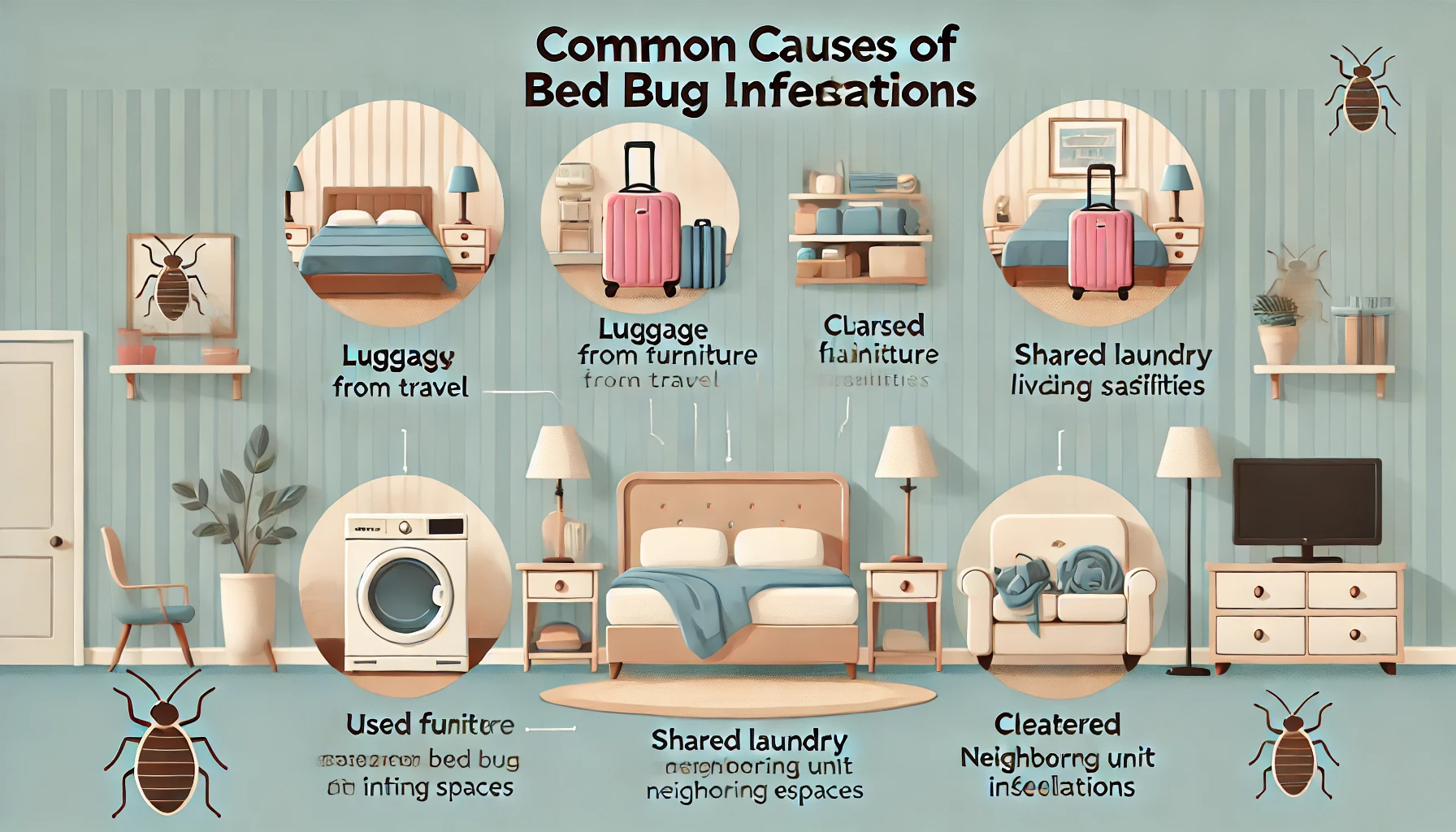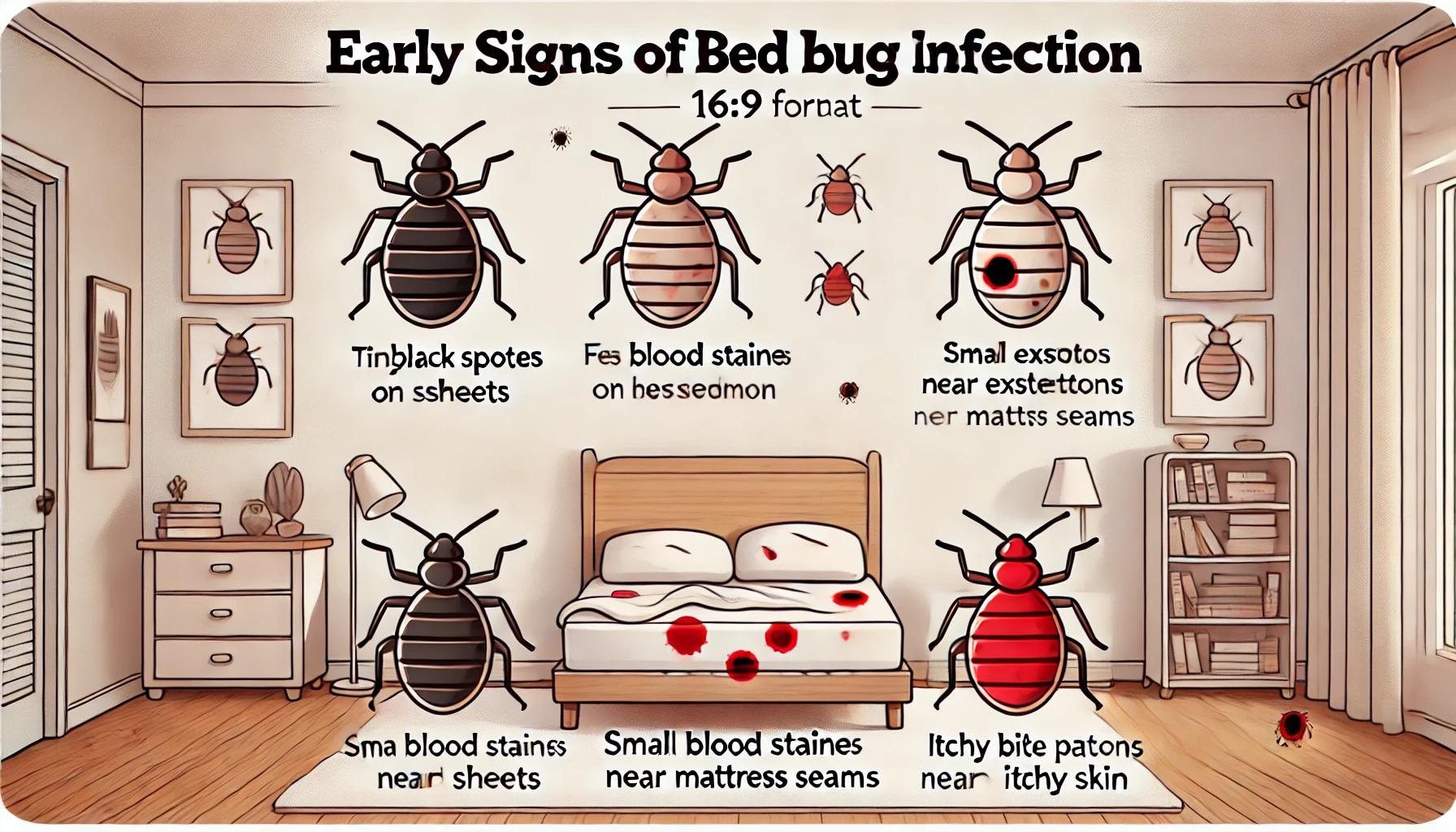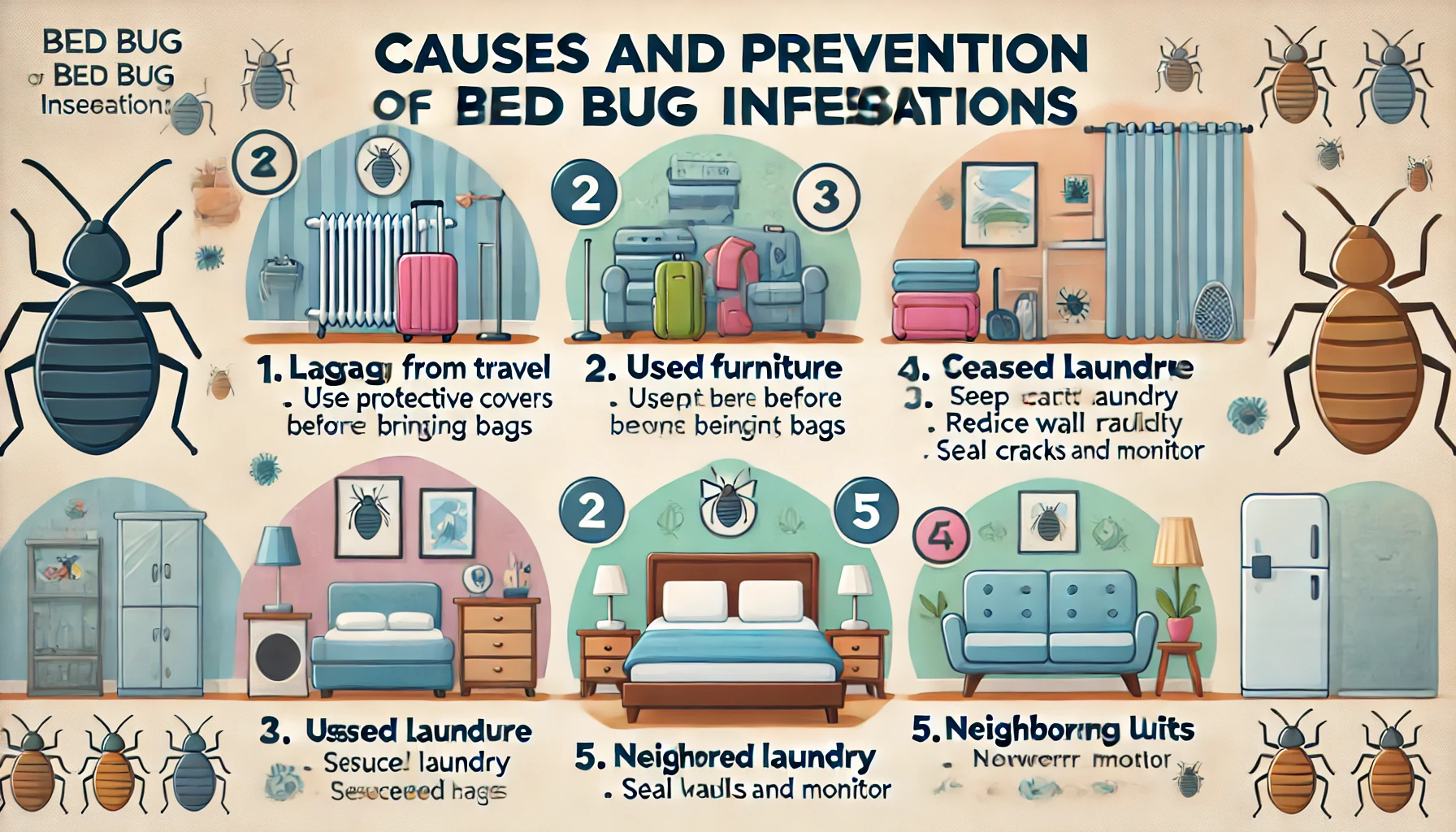Key Takeaways
- Bed bug infestations aren’t linked to cleanliness—any home can be vulnerable, regardless of how tidy it is.
- Traveling is the top way bed bugs enter homes; vigilance during hotel stays and trips can greatly reduce your risk.
- Secondhand furniture, particularly upholstered items, can hide bed bugs, so thorough inspection and proper treatment are crucial.
- Multi-unit living situations, like apartments or dorms, carry higher risks because bed bugs can easily move between units through small gaps.
- Public transportation and shared spaces like theaters or offices can serve as common transfer points for bed bugs, requiring extra caution with personal belongings.
- Regular inspections, decluttering, and using protective mattress covers are proactive ways to prevent bed bug infestations.
- Early detection—recognizing bites, stains, eggshells, or even unusual odors—can significantly limit infestation severity.
- Professional pest control services can effectively manage severe infestations when home remedies aren’t sufficient.
 Bed insects: Most people are disturbed by just hearing their name. They have become a rapidly regular annoyance in homes across the United States, causing itching, restless nights and general discomfort. And do you know what? Cleanliness is also not a decisive factor here.
Unique or disorganized houses can host these Pesky intruders unexpectedly. So, how do these small troubleshooters find their way in their comfortable living space? Let’s see the common causes and practical strategies to keep these insects away.
Bed insects: Most people are disturbed by just hearing their name. They have become a rapidly regular annoyance in homes across the United States, causing itching, restless nights and general discomfort. And do you know what? Cleanliness is also not a decisive factor here.
Unique or disorganized houses can host these Pesky intruders unexpectedly. So, how do these small troubleshooters find their way in their comfortable living space? Let’s see the common causes and practical strategies to keep these insects away.


Not getting a solution?
Get your free pest control estimate today!Common Causes of Bed Bug Infestations
There are some common reasons for bed bugs infestation which are responsible for chaos created by them:- 1. Traveling and Hotel Stays: Sneaky Stowaways A major reason is a journey—beed insects are magnificent travellers. They ride from places that you will expect at least, such as hotels, motels, resorts, and even cruise ships. They hide in their consciences in goods, clothes, and backpacks, taking care of anyone in their home after their journey. Do you think luxury hotels are safe? Honestly, even staunch establishments can host these tiny insects. They lurk in mattresses, beds, upholstery furniture, and carpets, quietly waiting for a ride. Imagine to unpack your belongings after a rest holiday, just to find out that you have brought unwanted guests – talk about a bad dream! Prevention Tips:- Inspect hotel beds, headboards, chairs, and carpets closely.
- Keep luggage off the floor—use luggage racks.
- Wash clothes immediately upon returning home, using hot water and high heat to dry.
- Inspect used furniture meticulously for eggs, droppings, or live bugs.
- Avoid picking up discarded furniture from the curbsides.
- Consider steam cleaning or professionally treating items before bringing them indoors.
- Regularly inspect shared walls, baseboards, and ventilation areas.
- Seal cracks and gaps around sockets, pipes, and walls.
- Quickly notify your building manager if bed bugs are spotted.
- Avoid placing bags or personal items directly on public seats or floors.
- Regularly inspect and clean bags, backpacks, and jackets after frequent use in public spaces.
- Launder items often, especially if you’re a regular commuter.
- Wash bedding and linens immediately after guests leave.
- Keep guest rooms tidy, reducing hiding spots.
- Inspect and treat items brought into your home if you know of a guest’s recent infestation.

Spotting Early Signs of Bed Bug Trouble
- Detecting bed bugs early is your best chance at preventing a full-blown infestation. So, what exactly should you look out for?
-
Bite Marks: Look for small, itchy red welts, often appearing in clusters or lines on exposed skin.
-
Blood Stains and Fecal Spots: Tiny rust-colored or dark spots on sheets, mattresses, or furniture are a major red flag.
-
Shed Skins and Eggshells: Translucent skins and tiny white eggshells can be found in mattress seams or tight crevices.
-
Live Sightings: Adult bed bugs are flat, oval, and brown—about the size of an apple seed—often hiding in cracks or seams.
-
Strange Odors: A sweet, musty scent (similar to coriander) may indicate a heavy infestation.

Effective Ways to Keep Bed Bugs Away
Here are some methods one can take for precaution for themselves and their family from this pesky intruders;- Routine Inspections: Stay One Step Ahead Perform regular checks around your home, inspecting mattresses, furniture seams, carpets, and baseboards and making this a habit can save you from a lot of headaches later on. Protective Mattress Covers: A Barrier of Defense Encasing your mattress and box spring in bed bug-proof covers creates an effective barrier. These protective covers simplify detection and containment, preventing infestations from becoming unmanageable. Declutter and Deep Clean: Fewer Hiding Spots Reducing clutter eliminates a number of hiding places for mattress bugs. Regular vacuuming round beds and upholstered furnishings helps you see early symptoms more quickly. Travel Wisely: Be Vigilant Inspection your journey residence a habit. Keep the luggage high, and wash your clothes immediately when returning home. This may look tiring, but honestly, it is a meaningful precaution.Professional Pest Control: When Things Get Serious
If you suspect an infestation, don’t hesitate to call professional pest control services. They have the required tools and methods—like heat treatments and targeted insecticides—to handle these pests effectively.
Clearing Up Some Bed Bug Myths
Before you now panic, let’s now clear up some highly common misconceptions or myths about these bed bugs:- Myth: Bed bugs only infest dirty homes.
- Reality: Bed bugs are after human blood, not dirt. They couldn’t care less how clean your place is.
- Myth: Bed bugs live exclusively in beds.
- Reality: They love hiding everywhere—from sofas and chairs to electrical outlets and picture frames.
Visit our Species, Control, and DIY Guide sections for additional resources on bed bug and ways to tackle a bed bug infestation.





